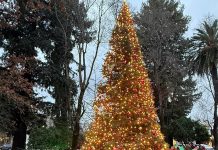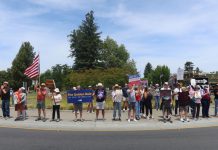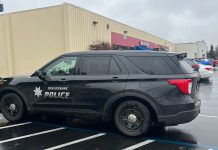The much-anticipated Sustainable Design Assessment Team (SDAT) report, also known as the vision for Healdsburg 2040, was released early Tuesday morning and made available to residents, city staff and the public.
The program, which works under the premise that public participation is vital for good community design and planning, held several workshops earlier this year to discuss current issues such as how the city should create a balance between visitors and residents, hotels, housing and more.
The SDAT process kicked off when a team from the American Institute of Architects visited the Healdsburg High School gym on Aug. 13, where the group encouraged discussion by asking participants several questions.
Questions were steered towards understanding what residents like about the community, what could be improved and what the current issues are.
Examples of conversation starters and questions asked included, “Where do you live and where do you work?”; “Healdsburg is ___,”; “As we change and grow what characteristics do we want to protect and what do we want to change”; “Who are the groups we need to provide housing to”; and “If you had 1,000 volunteers, what project would you do?”
The group elicited several thousand responses and worked on developing a roadmap for how to answer people’s questions and how these inquiries would be solved and put to planning.
After the initial August meeting, Healdsburg 2040 stewards, Dick Burgarski, Richard Burg, Carla Howell, Ariel Kelley, Lacey Scott, Will Seppi and Tim Unger, then worked to create five different focus sections/working groups for the major topics at hand.
These included master plan, housing, connectivity, arts and culture and social fabric, according to Unger. Now that the report is complete, stewards worked to summarize the in-depth 60-page report and highlighted a few key takeaways.
According to the summary, “Connectivity was a recurring theme throughout the report, suggesting it is critical to a sustainable future for Healdsburg.” The AIA team suggested working towards improving physical connectivity between the river, parks, schools and the Plaza. The hope is to provide a space for residents to walk between these various points throughout the city and provide easy access to parks and open space.
The arts and culture section seemed focused on creating more social and physical connectivity through “existing cultural entities, community-based art projects and art in public spaces.”
While there are several art galleries throughout Healdsburg, the team says public art and community-based art projects could help create more communal art spaces for everyone to easily enjoy.
In terms of growth and housing, AIA determined that, “Healdsburg faces a demographic bomb—70 percent of homeowners are over 55. Housing between 60 percent and 120 percent of (annual median income) is missing.” The summary cited the need for more affordable housing and for the city to include more inclusive housing policies in its general plan.
And lastly, in regards to the “social fabric” section, the report found that there is a “dangerous” level of division in Healdsburg civic life. In other words, there is a lack of collaboration and activity between residents and their elected officials and city staff.
“Key to achieving sustainable solutions are processes that bring citizens and civic leaders together to work toward common interests. In small towns, this can be tough,” the report explained, however, they believe Healdsburg is well positioned to build civic collaborations (between its residents and city officials).
The next part of the process comes at the first of the year when the program will hold a public meeting for residents to respond to the report’s recommendations. The meeting will take place Jan. 13 from 3 to 5 p.m. at the Healdsburg High School gym.
In a press release, the stewards said of the meeting, “The task of prioritizing and implementing these recommendations requires wide community participation,” so all are welcome to attend.
If you want to join in one of the five aforementioned working groups, then sign up at: https://bit.ly/2RkbDRK.
To view the full SDAT report, click here: https://bit.ly/2KCYxN5.
In a series of articles, the Tribune will explore the five different topics discussed in the report, so stay tuned for a more, in-depth look at the SDAT report.









